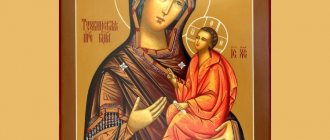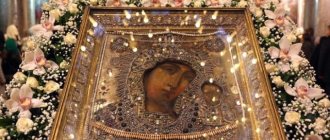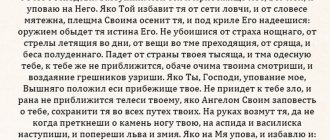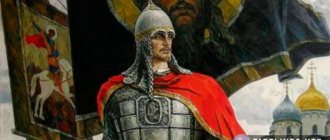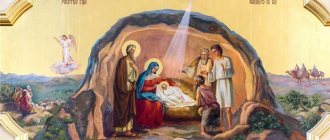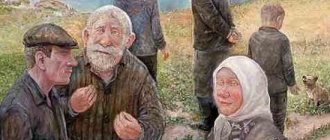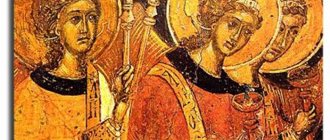Holiday calendar, signs, dates and events for every day of the year - folk calendar, Orthodox calendar, church calendar, eastern calendar, astrological calendar, lunar calendar, industrial calendar, state and professional holidays, including significant World and International holidays and public holidays, folk holidays and omens, and other equally interesting and unusual holidays, dates and events of the year, zodiac signs, dream books, and much more.
Calendar is a system for counting long periods of time, based on the periodicity of such natural phenomena as the change of day and night, the change of phases of the Moon , change of seasons.
Calendar - (from Latin Calendarium - debt book) a system for counting large periods of time, based on the visible movements of celestial bodies. The cyclic movement of such astronomical objects as the Earth, the Sun and the Moon is of primary importance for the construction and understanding of calendars. The word “calendar” itself comes from the Latin caleo (to proclaim), calendae (first day of the month) and, in fact, calendarium (debt book). A calendar is usually called a system of counting long periods of time based on the periodicity of natural phenomena, dividing them into shorter periods: millennia, centuries, years, months, weeks and days.
Calendar – (from Latin calendae or kalendae, “calends” - the name of the first day of the month among the ancient Romans), a way of dividing the year into convenient periodic time intervals. The main tasks of the calendar are: a) fixing dates and b) measuring time intervals.
The first calendar arose a long time ago, in ancient times, because there was a need to measure time. The word calendar comes from the Latin words caleo - to proclaim and calendarium - debt book. In Ancient Rome, debtors paid interest on the day of the calendar, the first days of the month) - a number system for large periods of time based on the periodicity of the movement of celestial bodies: the Sun - in solar calendars, the Moon - in lunar calendars, and at the same time both the Sun and Moon in lunisolar calendars .
The calendar allows you to record historical and social events in their chronological sequence. One of the important tasks of the calendar is to determine the moments of church events, moving and non-moving holidays (for example, Easter).
There are three main types of calendars: 1) lunar, 2) solar and 3) lunisolar.
1. Lunar calendar, which is based on a synodic lunar month with a duration of 29.5 average solar days. Originated over 30,000 years ago. The lunar year of the calendar contains 354 (355) days (11.25 days shorter than the solar one) and is divided into 12 months of 30 (odd) and 29 (even) days each (Muslim, Turkish, etc.). The lunar calendar is adopted as a religious and state calendar in the Muslim states of Afghanistan, Iraq, Iran, Pakistan, the United Arab Republic and others. Solar and lunisolar calendars are used in parallel for planning and regulating economic activities.
2. Solar calendar, which is based on the tropical year. Originated over 6000 years ago. Currently accepted as the world calendar. For example, the “old style” Julian solar calendar contains 365.25 days. Developed by the Alexandrian astronomer Sosigenes, introduced by Emperor Julius Caesar in Ancient Rome in 46 BC and then spread throughout the world. In Rus' it was adopted in 988 NE. In the Julian calendar, the length of the year is determined to be 365.25 days; three “simple” years have 365 days each, one leap year has 366 days. There are 12 months in a year of 30 and 31 days each (except February). The Julian year lags behind the tropical year by 11 minutes 13.9 seconds per year. The error per day accumulated over 128.2 years. Over 1500 years of its use, an error of 10 days has accumulated.
In the "new style" Gregorian solar calendar, the length of the year is 365.242500 days (26 seconds longer than the tropical year). In 1582, the Julian calendar, by order of Pope Gregory XIII, was reformed in accordance with the project of the Italian mathematician Luigi Lilio Garalli (1520-1576). The counting of days was moved forward by 10 days and it was agreed that every century that is not divisible by 4 without a remainder: 1700, 1800, 1900, 2100, etc. should not be considered a leap year. This corrects an error of 3 days every 400 years. An error of 1 day “accumulates” in 3323 years. New centuries and millennia begin on January 1 of the “first” year of a given century and millennium: thus, the 21st century and the 3rd millennium AD (AD) began on January 1, 2001 according to the Gregorian calendar.
In our country, before the revolution, the “old style” Julian calendar was used, the error of which by 1917 was 13 days. On February 14, 1918, the world-accepted “new style” Gregorian calendar was introduced in the country and all dates moved forward 13 days. The difference between the old and new styles was 11 days in the 18th century, 12 days in the 19th century, and 13 days in the 20th century - this will remain until 2100.
The solar calendar usually focuses on four main dates - two equinoxes and two solstices. The accuracy of a calendar is determined by how accurately the equinox falls on the same day each year. The lunisolar calendar is an attempt to harmonize the length of the lunar month and the solar (tropical) year through periodic adjustments. To ensure that the average number of days per year according to the lunar calendar corresponds to the solar year, a thirteenth lunar month is added every 2 or 3 years. This trick is required to ensure that the growing seasons fall on the same dates each year.
3. Lunisolar calendar, in which the movement of the Moon is coordinated with the annual movement of the Sun. The year consists of 12 lunar months of 29 and 30 days each, to which “leap” years containing an additional 13th month are periodically added to take into account the movement of the Sun. As a result, “simple” years last 353, 354, 355 days, and “leap” years last 383, 384 or 385 days. It arose at the beginning of the 1st millennium BC and was used in Ancient China, India, Babylon, Judea, Greece, and Rome. Currently adopted in Israel (the beginning of the year falls on different days between September 6 and October 5) and is used, along with the state one, in the countries of Southeast Asia (Vietnam, China, etc.).
Next: History of calendars...
Church calendar for every day
The church calendar is a time counting system used by the Orthodox Church to determine the sequence of church holidays and fasts in the annual cycle, as well as the corresponding services. Also the name of printed publications of various types, containing (in addition to general calendar functionality) elements of the monthly calendar and other materials of a liturgical and menological nature adapted to a specific year. The Church calendar contains two annual circles of events... Church calendar
Zealous Intercessor, Mother of the Lord Most High...
The Kazan Icon of the Mother of God is one of the most revered images in Rus'. And although today the original is lost, there are miraculous lists, and there are copies in literally every home.
According to the iconographic type, the Kazan image belongs to the “Hodegetria” (Guide) images. Along with “Oranta”, this is the most common version of the image of the Virgin Mary. The Mother of God is written from the chest, her face is slightly inclined towards the face of the Child Christ sitting in the arms. The Kazan Mother of God is a simple and therefore almost the most recognizable image of Orthodox Russian iconography. Copies of the icon were created, always strictly following the canon of the original - the icon painters did not allow serious discrepancies with the miraculous icon. Moreover, on later samples the face of the Virgin Mary is depicted almost full-face; on the original and copies of the 16th-17th centuries, she is more bent over the Son.
Finding a holy image.
Until the 16th century, Kazan was predominantly Muslim. And only in 1553, a year after the conquest of the city by Ivan the Terrible, an Orthodox diocese was founded here. Residents were quite reserved about the new religion and did not perceive it as their own. However, the situation changed significantly after the fire of 1579, during which most of the buildings of the Kazan Kremlin burned down. The townspeople initially regarded the disaster as “the wrath of the Russian God,” and Orthodoxy in Kazan was under threat. And then a miracle happened - the Mother of God appeared to the girl Matrona, the nine-year-old daughter of the archer Onuchin, whose house was also damaged in the fire. The Mother of God ordered the child to inform the archbishop and mayors so that they could find the holy image in the ashes, and indicated the exact place where they needed to look. Matrona conveyed the words of the Mother of God to her parents and church authorities, but for the first time no one paid attention to them. They didn’t listen to the child a second time either. On the third day, the Mother of God appeared to the girl with the words: “If you do not follow my instructions, I will appear in another place, and you will die.” Matrona turned to her mother in despair and she responded to the request. Together with their assistants, they began to explore the ashes exactly at the place indicated by the Mother of God. But the face appeared only when Matrona herself took part in the search.
The icon was found wrapped in worn cloth. When it was revealed, people were amazed at how pure and bright the colors were on the icon. It seemed that not only was she not touched by the fire, but she was not even lying on the ashes.
The events of the miraculous appearance of the image were described by the priest of the St. Nicholas Church Ermolai, later known as Patriarch Ermogen of Moscow (c. 1530 - February 17 (27), 1612), subsequently canonized as a hieromartyr of the Orthodox Church, in “The Tale and Miracles of the Most Pure Mother of God, Her Honest and Glorious Appearance images like those in Kazan.” On the site of the ashes where the girl found the icon, Ivan the Terrible ordered the construction of a convent. The first novices were Matrona and her mother.
National veneration came to the icon at the end of the Time of Troubles (late 16th – early 17th centuries), when Russian statehood was experiencing a severe crisis. The Civil War and the increasing role of Polish aristocrats in power led to influential boyar clans fighting each other throughout Russia. Patriarch Ermogen played a significant role in raising the spirit of the common people, who called not only for peace, but also for the preservation of the Orthodox faith. He was later imprisoned for these speeches.
However, the patriarch’s instructions still had an effect - a militia was formed in Nizhny Novgorod under the leadership of Prince Dimitry Pozharsky and Kuzma Minin. The troops are heading to Moscow; on the way, Kazan residents join them and hand over a list of the icon of the Kazan Mother of God. Before the storming of the Moscow Kremlin, in 1612, the militia held a three-day fast and prayed to the image of the Virgin Mary.
During the siege of Moscow, Archbishop Arseny of Elasson was there. According to contemporaries, St. Sergius of Radonezh appeared to him and said that thanks to the intercession of the Mother of God, the invaders would leave the capital, and Russia would be saved.
In the fall of 1612, Moscow was indeed liberated by militias from the interventionists. On October 25 of the same year, a procession with the icon of the Mother of God from Kazan was held in the Kremlin. Pozharsky believed that it was prayers in front of the holy image that helped him in a difficult battle. Since then, the icon has received the glory of the intercessor of the Russian land. It is in memory of these events that the holiday of November 4 was established in honor of the Kazan Icon of the Mother of God. After the victory, the Kazan Cathedral on Red Square was rebuilt for the Heavenly Protectress.
The victory of the Russian army in 1612 is not the only case when the intercessory power of the icon of Our Lady of Kazan was manifested. Chronicles mention her help during the battle of Poltava (1709); the image also played an important role in the war with Napoleon in 1812. Field Marshal Mikhail Illarionovich Kutuzov prayed for victory before the face of the Mother of God. Particularly noteworthy is the successful battle near Vyazma, which coincided with the day of veneration of the icon. Then Russian troops managed to defeat Napoleon's army - this was the first major victory over the invaders after the French left Moscow.
Loss of the revealed icon.
At the beginning of the twentieth century, the original icon was lost. Therefore, all miracles after this time are associated with the lists of the Kazan Mother of God. There are several versions of the loss of the miraculous face. There are several versions of what happened.
According to the first and most common one, in 1904 the Kazan Monastery was robbed. On the night of June 28-29, 1904, the thief Stoyan Chaikin penetrated the walls of the Kazan Mother of God Monastery, tied up the guard, broke open the doors of the main church and took away two icons - the Savior Not Made by Hands and the Kazan Image of the Mother of God.
The order of the prosecutor of the Kazan district court to the head of the gendarme department read: “...at about 2 o’clock in the morning the theft of two icons was committed in Kazan, in the summer church at the Mother of God convent: the miraculous Kazan Mother of God and the Savior. Both of these icons were in precious vestments, valued: on the icon of the Mother of God up to 70 thousand rubles and on the icon of the Savior up to 30 thousand rubles. In addition, about 600 rubles were stolen from two candle boxes by breaking into them...”
The kidnappers were detained without delay. When asked where the icons were, the leader of the gang replied that their frames were sold, and the images themselves were chopped with an ax and burned in an oven.
However, many researchers do not believe in this version. After all, by the beginning In the 20th century, the fame of the Kazan Mother of God had already thundered throughout Russia. It is difficult to imagine that the thieves did not know what icon they were taking out of the temple. Historians suggest that the image was sold because it could be worth much more than the precious salary. This icon, as it appeared before the reforms of Patriarch Nikon, could be of particular interest to Old Believers who valued icons of the “old script”.
According to an alternative version that arose during the investigation of the crime, the thieves took away not the original, but a copy of the image. Fearing robbery, the abbess of the monastery took the holy face to her chambers at night. According to another version, the icon was sold and hidden somewhere in Russia. However, today her whereabouts are unknown.
Return of the “Vatican” list of the Icon of the Mother of God of Kazan.
Almost a century after the theft of the Kazan Icon, the image, which many people considered to be the same revealed face stolen in 1904, returned to Russia.
In the first years of Soviet power, many valuable objects of art and antiquities were exported from Russia abroad; in this flow, the so-called Vatican copy of the Kazan Icon of the Mother of God was sent to the West.
In 1928, Norman Weiss bought the old list. The list ends up in England and soon finds a new “owner,” millionaire Frederick Mitchell-Hedges. In 1953, a collector bought Farley Castle in the English province of Berkshire. The image of the Virgin Mary he acquired was open to believers, began to show miracles and became widely known among emigrants under the name “Black Virgin Mary of Farleigh Castle.” Orthodox believers, mainly Russians from the first wave of emigration, began to come to the icon. Some emigrants convinced the owner that this icon was kept in the Kazan Cathedral in Moscow, others claimed that they saw it in the capital of the Russian Empire, St. Petersburg, although the Moscow and St. Petersburg lists were very different from each other.
According to the conclusion of the examination conducted at the University of Cambridge, a comparative analysis of three Kazan Mother of God icons kept in Kazan, Moscow and St. Petersburg was carried out, and the conclusion was made: “The image of the Kazan Icon of the Mother of God, which appeared in England, largely coincides with the surviving descriptions of the icon , disappeared from Kazan, but its dimensions are different: 7 vershoks in length and 6 in width (i.e. 31 x 27 cm) ... If this is not the Kazan revealed icon, then it is undoubtedly an excellent copy with a striking power of faces and colors, still undescribed and almost contemporaneous with the Kazan icon, and is a well-dated monument, closely connected with the events of the history of Muscovite Rus'.”
The Moscow copy of the Kazan Icon of the Mother of God was also stolen in Soviet times directly from the altar of the Moscow Kazan Cathedral. The kidnappers were not detained. There were no witnesses to the theft. On this basis, the icon that appeared in England could be either a Kazan or a Moscow image. Or various robbers sold several miraculous icons abroad.
It is not known where the revealed image was kept before the October revolution - in Kazan, Moscow or St. Petersburg. Even more difficult to trace is the origins of the image, which was presented in San Francisco in 1962 for research and sale.
The Kazan Icon, purchased by Catholics, was transferred to the Church of St. Fatima on July 21, 1970, on the feast of the acquisition of the image of the Virgin Matrona. The miraculous image was taken to Lisbon on March 1, 1993, and then the icon was transported to the Vatican, where it took the place long ago prepared for it, firmly settling in the very heart of the Holy See - in the personal chambers of Pope John Paul II. His Holiness himself demanded that the icon be brought to Rome, because he wanted to personally take it to Russia.
For the first time, Vatican officials officially announced that the Kazan Icon was kept by the pope only seven years later. Soon a delegation from Kazan arrived in Rome. The culmination of the meeting was the audience of the mayor of the Tatar capital Kamil Iskhakov with Pope John Paul II.
In August 2004, Pope John Paul II decided to donate to the Russian Orthodox Church the miraculous icon of the Kazan Mother of God, in front of which he himself prayed daily. In the Vatican, with a gathering of thousands of believers, a solemn ceremony of farewell to the icon took place.
On August 28, 2004, on the feast of the Dormition of the Mother of God, in Moscow, in the Kremlin Assumption Cathedral, a delegation from the Vatican led by Cardinal Walter Kasper handed over the icon of the Kazan Mother of God to the Patriarch of Moscow and All Rus'
The icon, which did not correspond to the ancient descriptions, according to the joint Russian-Vatican commission, established that it was a later copy of the 17th century.
Interesting facts from the history of the veneration of the Kazan Icon of the Mother of God:
- The first miracles of the Kazan Mother of God were recorded by the future Patriarch Ermogen, literally immediately after the acquisition of the image. Thus, the two blind men who helped carry the icon to the church regained their sight.
- The first list of the icon revealed in Kazan was made by order of Ivan the Terrible already at the end. XVI century.
- The day of veneration of the Kazan Icon is celebrated by Orthodox believers twice a year. July 21 (July 8, old style) celebrates the attainment of holy age - the date of the appearance of the icon on the ashes of the Kazan Kremlin. November 4 (October 22, old style) is revered in honor of the first great miracle - the liberation of Moscow from invaders.
- The Kazan Icon of the Mother of God was revered as the Patroness of the Romanov dynasty. In 1649, during the all-night vigil on October 22, Tsar Alexei Mikhailovich gave birth to his heir, Dmitry Alekseevich. This event was interpreted as the mercy of the Mother of God to the royal family. By the way, it was from this year that by decree of Alexei Mikhailovich, October 22 became the official all-Russian day of veneration of the Kazan Mother of God.
- The veneration of the icon as the protector of Rus' is connected not with the original image, but with its copy. It was with a copy of the holy face that Minin and Pozharsky entered Moscow and defeated the invaders in 1612. Under Tsar Mikhail Fedorovich Romanov, the Kazan Church was built in the city, in which the miraculous icon was kept. It is noteworthy that the Moscow copy, like the original, was lost in the beginning. XX century. In 1918, it was stolen from the temple; the perpetrators were never found; the further history of the image is unknown today. In the 30s, despite the recent reconstruction of the Kazan Cathedral, the authorities considered the maintenance of the temple too expensive and simply demolished it. The monastery was rebuilt in 1990-1993.
- The second copy, revered on a par with the original, is the St. Petersburg one. In 1801-1811, the Cathedral of the Kazan Icon of the Mother of God, the largest church in St. Petersburg, was built specifically to store the revered list. A year later, it became a symbol of the victory over Napoleon. Field Marshal Kutuzov was also buried here. Like the Moscow temple, the cathedral was abolished in the 30s and revived 60 years later.
In Finland, on the feast of the Kazan Icon of the Mother of God on July 8th, the patronal feast day is celebrated in:
Church of the Kazan Icon of the Mother of God in Järvenpää (Orthodox parish of Helsinki)
All-night vigil on Saturday, July 7th. at 17.00 o'clock.
Blessing of Water and Divine Liturgy on Sunday, July 8, beginning. at 9:30 o'clock.
Address: Kartanontie 45, Järvenpää
Church of the Kazan Icon of the Mother of God in Loviisa (Orthodox parish of Kotka)
Blessing of Water and Divine Liturgy on Sunday, July 8, beginning. at 10:00 o'clock.
Address: Itäinen tullikatu 17, Loviisa
Troparion of the Mother of God, sung before Her miraculous Kazan Icon, tone 4:
O zealous intercessor,/ Mother of the Lord Most High,/ pray for all of Thy Son Christ our God,/ and cause all to be saved,/ in Thy sovereign protection of those who flee./ Intercede for all of us, O Lady Queen and Lady,/ in times of adversity and sorrow, and in illness, burdened with many sins,/ coming and praying to You with a tender soul/ and a contrite heart,/ before Your most pure image with tears,/ and those who have irrevocable hope in You,/ deliverance from all evils,/ grant useful to everyone,/ and save everything, To the Virgin Mary: // Thou art the Divine protection of Thy servant.
Kontakion, Mother of God, sung before Her miraculous Kazan Icon, tone 8:
Let us, people, come to this quiet and good refuge, / the quick Helper, the ready and warm salvation, the protection of the Virgin, / let us hasten to prayer and strive for repentance: / for the Most Pure Mother of God exudes unto us boundless mercies, / advances to our aid, and delivers us from great troubles and evil // His well-behaved and God-fearing servants.
The magnification sung before Her miraculous Kazan image:
We magnify You,/ Most Holy Virgin,/ and honor Your holy image,/ from whom grace flows // to all who flow to Him with faith.
Russian folk calendar for every day
Season: Winter - December, January, February.
Season: Spring - March, April, May.
Time of year: Summer - June, July, August.
Season: Autumn - September, October, November.
